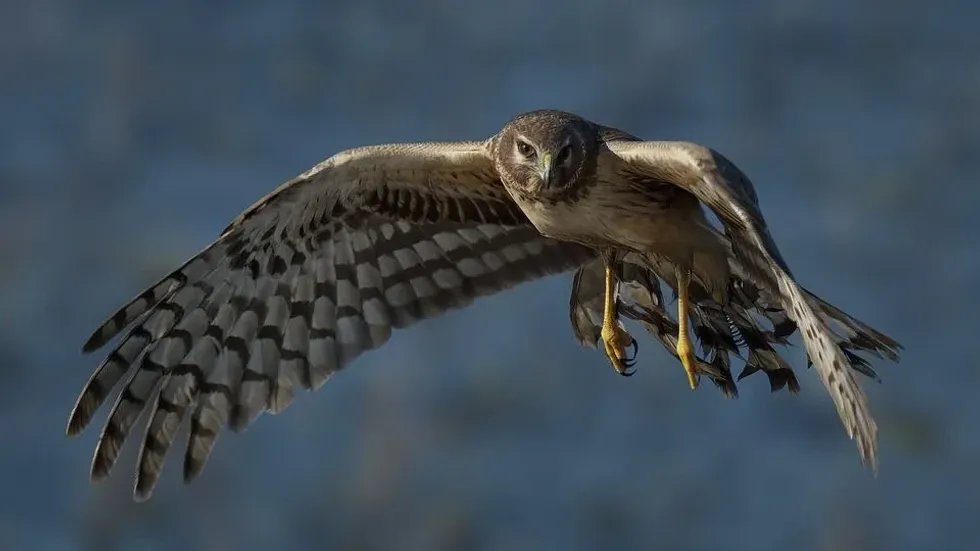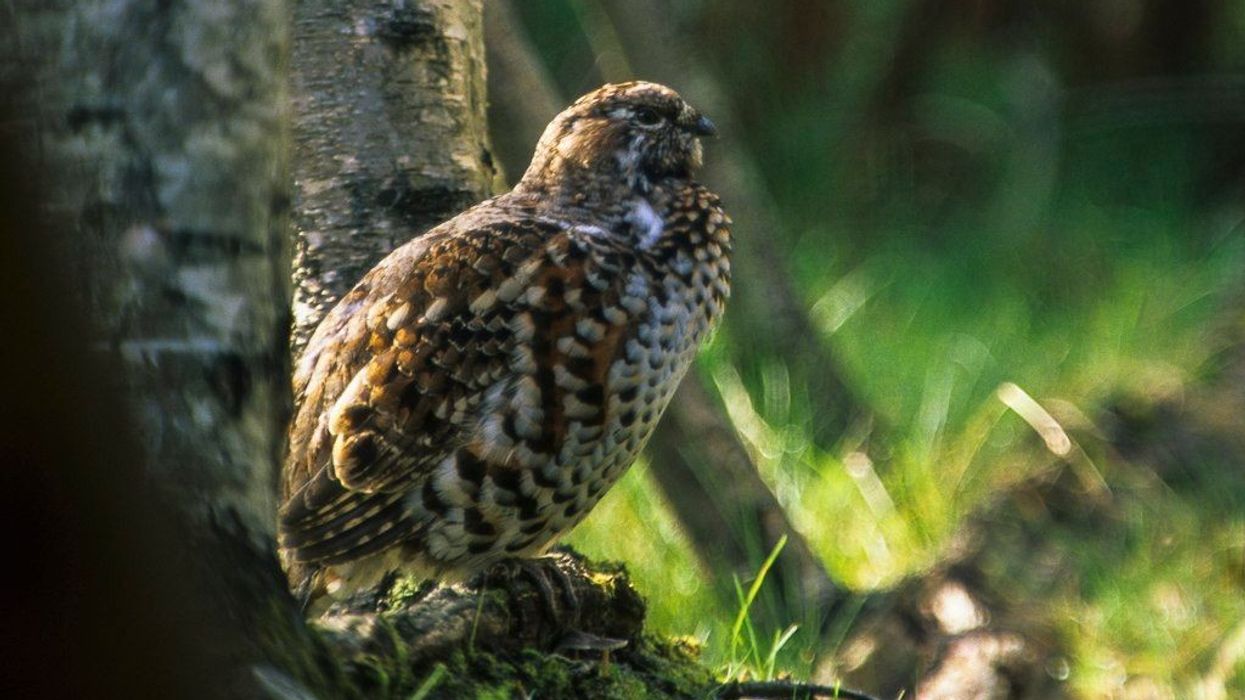If you ever see birds flying low in an open country with a long wingspan and an owl-like face, then you have spotted the Harrier Hawk!
The Harrier, also known as the Northern Harrier or Marsh hawk in the United States and Hen Harrier by the British are found mostly in the temperate regions of South America. The Harriers belong to the family of bird of prey, Accipitridae.
The hawk, in layman's terms, is a bird of prey that typically takes its prey by surprise with a short chase.
The Northern Harrier is also known as a Raptor. The raptor essentially is a Latin term that means 'to seize by force', and the reason this species of Harriers is called so is because of its hunting habits to hunt on vertebrates and small mammals primarily.
However, nowadays the adult Harriers are endangered throughout North America due to the loss of marshlands; hence a moral stand to conserve our diverse population of birds is of utmost importance.
Until then, why don't you continue reading some cool facts about the Harrier Hawk and do check out our articles on the roseate spoonbill and shoebill too.
Harrier Hawk Interesting Facts
What type of animal is a harrier hawk?
The Harrier hawk is a type of hawk that is long-tailed and long-winged, having a wingspan of about 38–48 in (97–122 cm)
What class of animal does a harrier hawk belong to?
The Harrier hawk is a bird or called scientifically, Aves.
How many harrier hawks are there in the world?
About 11 different species of the Harrier Hawk bird are found globally, although the current population of the Northern Harrier exceeds 100,000 birds.
Where does a harrier hawk live?
The Harrier species are spread across various regions, countries, and continents such as North, Central, and South America. The other Northern Harrier species are distributed across Europe, Asia, Africa, India, Australia, and the surrounding islands. However, some species may not be as widely distributed and would only be found in certain tiny islands.
What is a harrier hawk's habitat?
The Hen Harrier Hawk, otherwise called Harrier Hawk, is mostly found in grasslands.
Who do harrier hawks live with?
Northern Harriers have a peculiar way of living; why? Well, they typically nest on the ground in loose colonies but some time alone. Their nest is found in loose colonies of 15-20 individuals, built mostly by the female.
It is made out of sticks and padded on the inside with grass. It is built on the ground on raised mounds of dirt or clumps of vegetation. Apart from their breeding season, they also roost communally on the ground with owls!
How long does a harrier hawk live?
The longest-lived Northern Harrier is 16 years and five months; however, the adult species have an average lifespan of eight years.
How do they reproduce?
The female Harrier Hawk has her own nest, and the male Harrier Hawk finds the female. Aerial displays and courtship-feeding rates are the criteria on which the female chooses her mate.
The females usually lay three to five eggs, depending on the kind of species. The females take up the responsibility of incubation and the care of chicks; after an incubation period of one month, the little chicks hatch.
What is their conservation status?
The Northern Harrier's conservation status is Least Concern, and its population is quite stable throughout the world.
Harrier Hawk Fun Facts
What do harrier hawks look like?
The Northern Harriers are slender, medium-sized raptors with fairly broad wings that make them quite a sight for sore eyes. Their face is flat and owl-like.
They also have a sharply hooked bill. An interesting physical feature that you could keep handy whenever spotting them fly is that all the Northern Harriers have a white rump patch that's quite obvious in their flight.
How cute are they?
Like all the hawks, Harriers come in varied colors such as brown, tan, black, or gray and long wings too! So you could definitely say they are appealing and attractive, but their long wings make them a little less cute.
How do they communicate?
These North American birds are quite vocal near their nests and have distinctive Harrier Hawk sounds for different situations. When in distress, the Northern Harriers make rapid, high-pitched sounds. Females issue a call for food during the mating season.
In the Madagascar Harrier Hawk case, the adult male has more nasal sound than its female counterpart. Were you aware that the young Northern Harriers also have a way to communicate with their parents? They do so by emitting a begging call when they see their parents flying overhead!
How big is a harrier hawk?
The length of the male Northern Harrier Circus cyaneus varies between 16-18 in (41-45 cm). The female varies between 18-20 in (45-50 cm), so you could say this North American bird is approximately thrice as large as a sparrow.
How fast can a harrier hawk fly?
The Circus hudsonius species fly with their wings held in V-shape above the horizontal, and their flight is streamlined like an airplane. This makes them fly quite speedily.
How much does a harrier hawk weigh?
The Harriers differ in weight depending upon whether it's a male or female. The males are lighter than the females. The range of weight for a male medium-sized Northern Harrier is 0.63-0.88 lb which averages 0.77 lb, and that of the females as 0.85-1.65 lb averaging out to 1.16 lb.
What are their male and female names of the species?
Both the female and male Northern Harrier species are called Northern Harriers themselves, with the only difference being their appearance.
The females have a varying degree of brown shade, whereas the males pertain to gray and lighter shades of it along with black wingtips, so the next time you go bird watching, look out for these colors if you want to identify the female and male Northern Harriers.
What would you call a baby harrier hawk?
A baby Harrier Hawk is also called Ring-tail Harrier, but you could give it any name you like based on their varied color ranges. These young chicks that have just hatched from eggs have plain brown, orange color so get creative with their name as you wish!
What do they eat?
The diet of these raptors is variable according to the dominant prey types in the area they live in. Areas consisting of large populations of small mammals make up 95% of their diet.
The species living in Northern grasslands diet on exclusive Microtus voles. The Northern Harrier also eats other small vertebrates such as snakes, frogs, passerine birds, and small waterfowl. In fact, while hunting for food, Harriers have been observed to be flying low to the ground until the prey is found.
Are they dangerous?
Very honestly, no species of animal or birds will ever harm humans unless you incite, and similar is the case for the Northern Harrier Circus. Truth be told, the majority of hawks are more useful to humans than they are harmful, yet there seems to be widespread prejudice against them.
Occasionally, they destroy smaller birds and poultry. However, it is rare as their regular diet includes small mammals, reptiles, and insects. All in all, you could classify them as not being dangerous to humans.
Would they make a good pet?
Harriers do not stay indoors, so they would be unlikely to be kept as pets, and it is also illegal to own a Harrier as a pet in some places. The reason being, these birds are wild predators and have several impressive defenses to use when they feel threatened. This could make them a less friendly pet!
Did you know...
If you were to compare Northern Harrier vs Red Tailed hawk, make sure you look at the most obvious factor, the tail! Most adult Red-tailed Hawks have a rusty-red tail that is absent for the usual Harrier. A number of bird species look like this raptor, namely the African Harrier hawk, Pale Harrier, and Black Harrier hawk.
The Hen Harrier, along with their flying skills, also glide and hover over moorlands to hunt the meadow pipits among the heather fields. Their flight is typically low in altitude while hunting. These birds rely on their eyesight and sense of hearing to hunt the prey, and you might spot the Hen Harrier hawk hovering in such situations.
Another interesting debate you could come across is the Golden eagle vs Harrier hawk. Golden Eagles are one of the largest birds found in North America. They are quite similar to the Harrier hawk with the only difference lying in their wings, which are broad like Northern Harrier hawk wings, but longer.
What is a harrier hawk's favorite ecosystem?
The Northern Harriers' preferred ecosystem is the grasslands or savannas as they prefer feeding in open areas with various grasses. In fact, the researchers believe that these birds were particularly evolved to hunt in grasslands as grasses emerged several million years ago.
How do humans affect harrier hawks?
This family of birds that tend to have an owl-like face has some interesting connections with humans! For starters, it is believed that seeing a hawk on your wedding day could potentially turn out to be a sign of a happy and long-lasting marriage.
Unlike many raptors, these Northern Harriers have been favored by farmers as they protect the crops from mice and other small animals that eat the yield.
The Northern Harrier is at times also called good hawk because they pose no threat to poultry as some hawks do.
As humans, we have deteriorated the population of the birds of this species with the extensive use of heavy pesticides. This has indefinitely led to a decline in the population of Harrier birds'.
Here at Kidadl, we have carefully created lots of interesting family-friendly animal facts for everyone to discover! Learn more about some other birds including king vulture, or Cooper's hawk.
You can even occupy yourself at home by drawing one on our Harrier Hawk coloring pages.










